He stared off into the distance with a stern look on his face. I wondered if I did something to upset him? What was going through his head as tourists like myself stood next to him with a big grin on my face. Did he even notice that I was there? He didn’t move an inch. I considered trying to tickle him, but decided against it – after all, he did have a gun or was it a rifle, or a musket, or something that looked like it was a weapon.
How would I like it if someone came and tried to distract me while I was working – I might shoot them actually.
But these people working on ‘the hill’ in Halifax Nova Scotia dealt with this every day – distractions. However, they were pros at remaining focused. The Halifax Citadel is one of the main sites of the area and this living history fort completely exceeded my expectations.
Table of Contents
Experience a Living History at the Citadel Fort
Construction of the Citadel Fort started in 1828 and finished in 1856. The fort’s purpose was to deter an overland assault on the city and the dockyard. This ‘lookout’ role explains why it’s at the top of the hill in downtown Halifax – a perfect view of the docks and harbors. Such was its strength that no enemy ever attacked the fort. In 1951 the citadel was made a national historic site and made into a living history site.
That’s where the stern looking focused sentry comes in. An actor (mainly students) who take their job VERY seriously stands guard at the main gate to the Citadel. Every hour, the sentry at the main gate is changed in a formal ceremony and a new serious sentry takes over with an equally stern look.
The ‘troops’ and sentries didn’t just guard the main gate, they were found throughout the fort playing a role and demonstrating what life was like. From bagpipe players and drummers to people representing commoners or family of ‘troops’. The Citadel was full of life and learning.
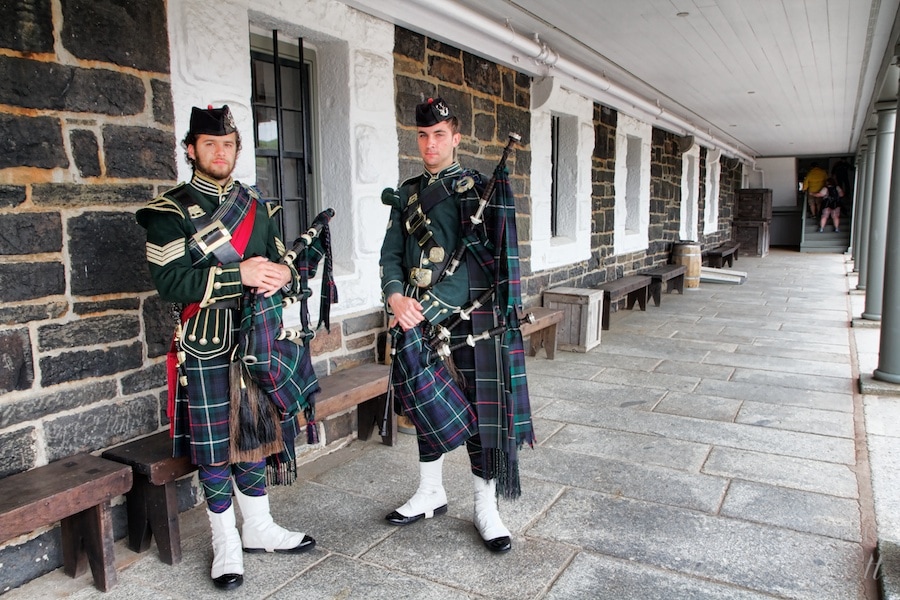
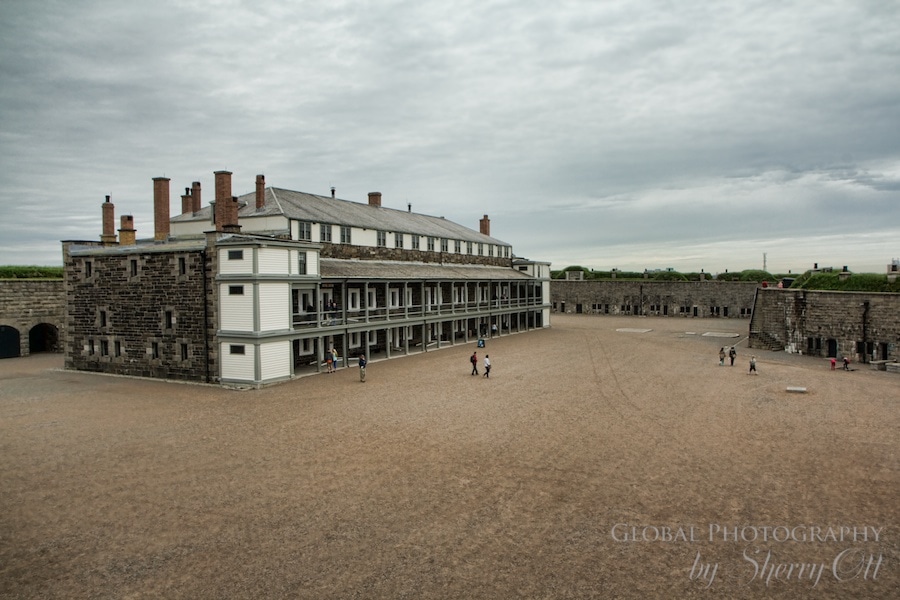
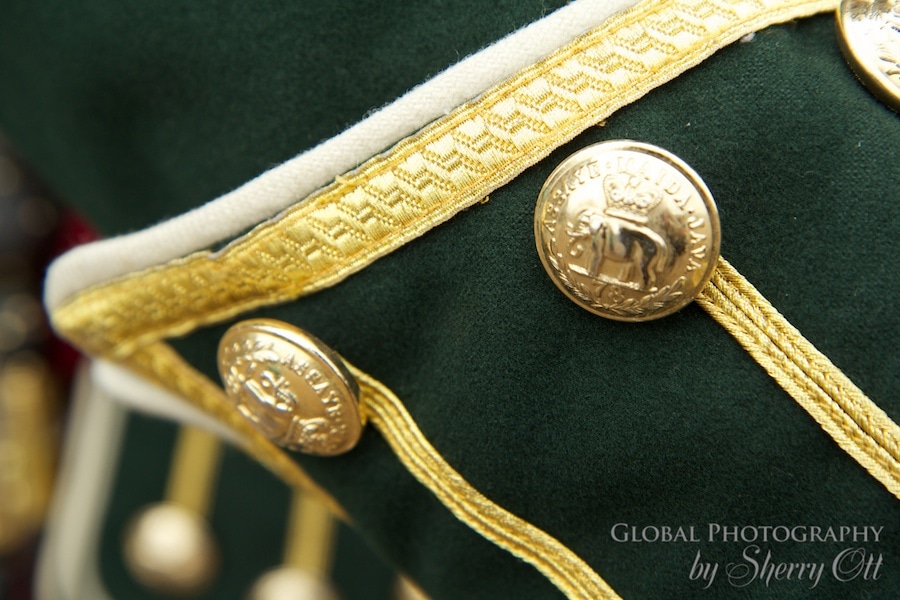
Noon Gun
A large part of the living history is the tradition of the noon gun. Every day except for Christmas day the noon gun, which is pointed out across downtown and towards the waterfront, is shot off. The tradition has been in place for 148 years.
It’s full of pomp and circumstance as the soldiers go through the whole ceremonious process as a crowd of tourists watch on. However my favorite part was probably that this old, historical tradition also had a modern twist.
The noon gun has a Twitter account and every day it sends out one tweet (above). Clever…I recommend following it!
Getting to know the ‘Troops’
The first time I even heard of the Citadel was when I was visiting my Canadian friends Andrew and Alison in Belgium this spring. I learned that Andrew actually worked at the Hill as a soldier/actor when he was a student – and he went on to let me know that it was one of his favorite jobs he ever did.
I asked him, “Why so serious? “
“Just to be pedantic, the point wasn’t to be emotionless, but to remain focused and not become distracted. In the mid-to-late 19th century, the biggest perceived threat was from the Americans. So the focus of the guards were to pay attention to what was happening in their field of view and stop anyone who was suspicious. If the sentry was smiling or joking, then they weren’t taking their job seriously and were putting the fort at risk.”
How to Remain Focused
I also asked him if he had a strategy for remaining focused while silly tourists like me tried to distract him. He provided me a few of his tips:
• Count the number of windows in the Nova Scotia Hospital across the harbor.
• Stare at the buildings and try to make out other buildings in the reflections.
• Keep track of the number of different license plates passing by.
• Watch the boats on the harbor.
• Make up games in your head about things around you, such as how many cars will pass before the next bus.
• Think. A lot.
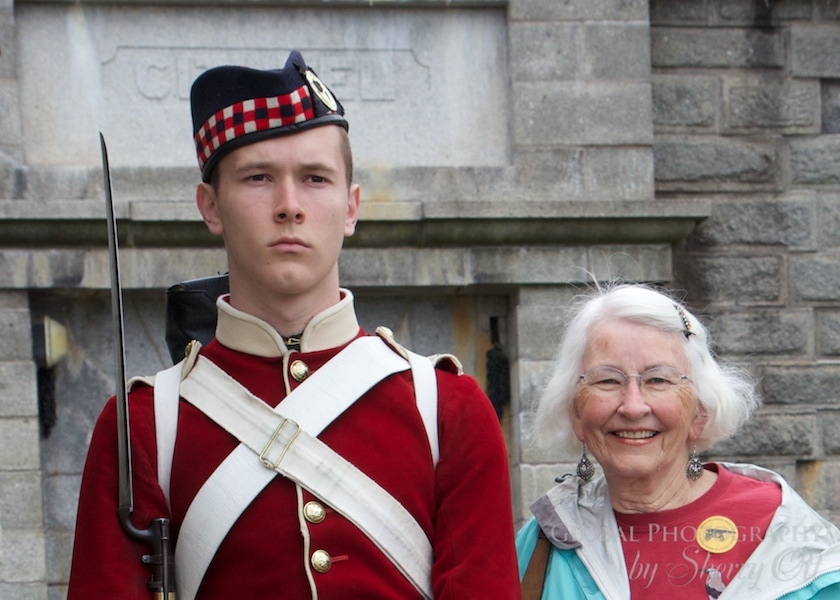
Andrew went on to share, “The best day to be on guard was when they were running the airshow in Dartmouth. Then you could spend the day watching the planes in the distance. The worst day to be on guard was when it was raining and cold.”
I also wanted to learn if he or others ever broke character. He replied, “Of course! None of us were immune. Usually though it was when people were simply being themselves. We had people try tickling us, lifting our kilts, blowing in our ears, telling us jokes, and worse.”
My mother and I both enjoyed our afternoon at the Citadel as part of our Nova Scotia 2 week road trip. Kids and seniors were fascinated by the history and the actors, where I was happy taking photos and enjoying the view. A great way to get a feeling for this city and the strategic spot it held for Canada.
Visitor information on the Halifax Citadel
Website – Halifax Citadel
Hours – July 1 to August 31 – 9:00 a.m. until 6:00 p.m.
September 1 to October 31 – 9:00 a.m. until 5:00 p.m.
November 1 to May 6 – The grounds are open from 9:00am until 5:00pm. Ghost Tours and other services available, however visitor experience services limited.
Tickets – $7 to $11
Disclosure: I was a guest of Visit Nova Scotia during this trip and they provided me assistance with lodging as well as suggesting driving routes. However all of the opinions here are my own.

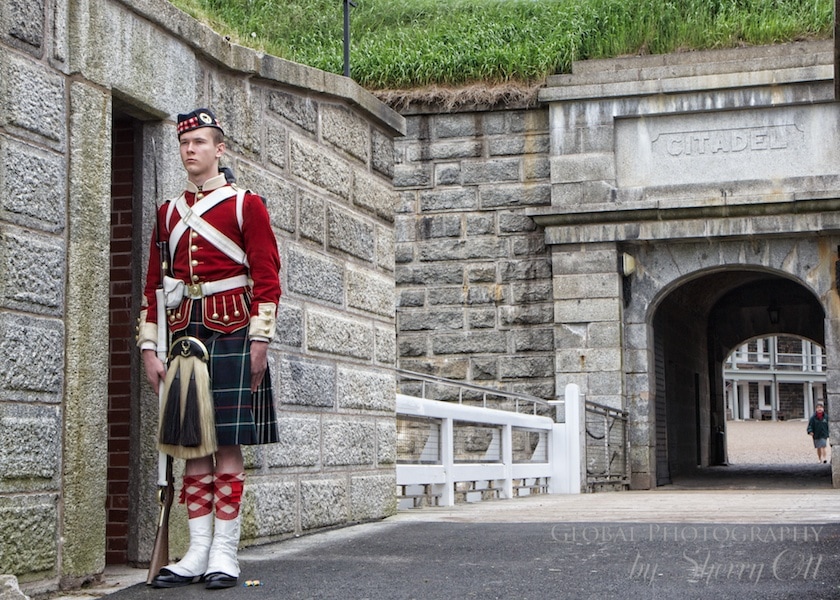

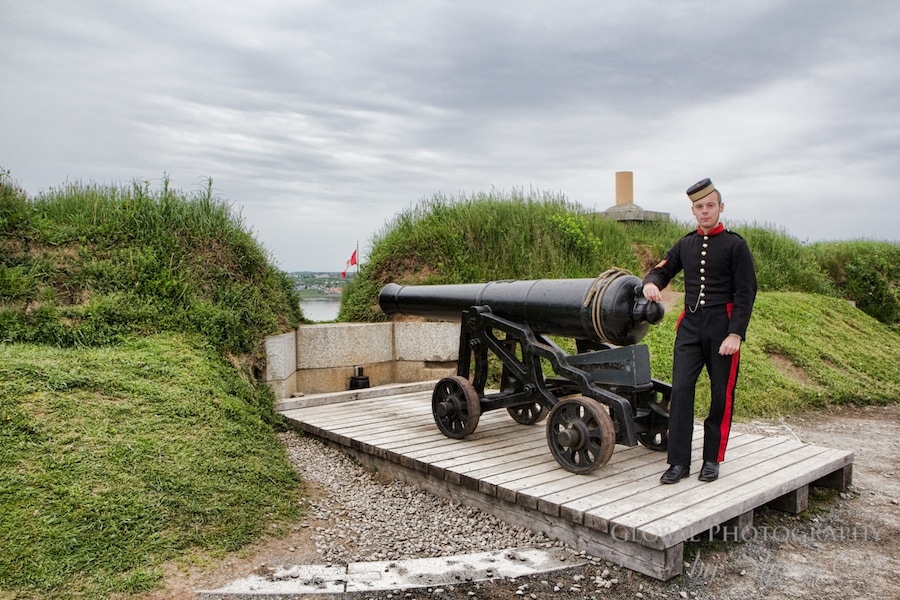
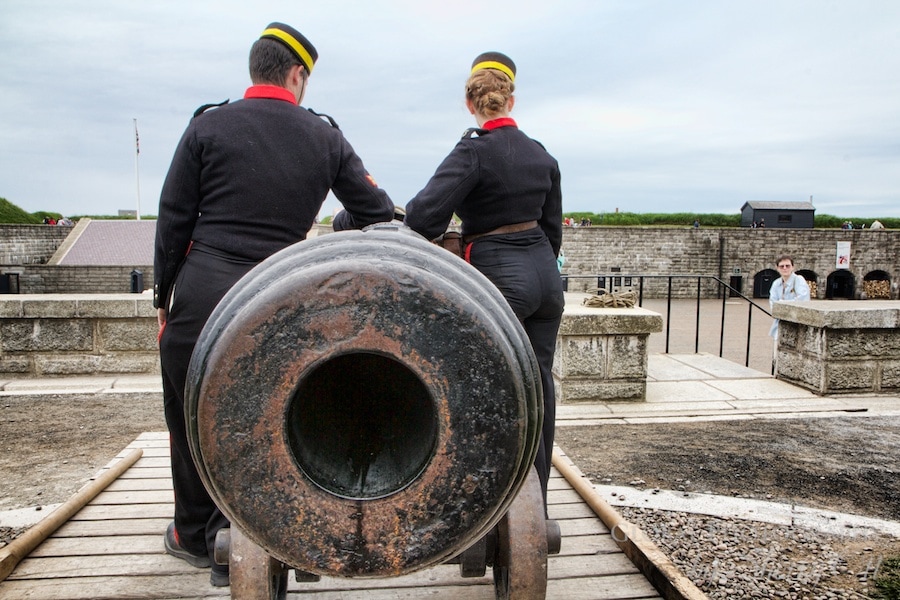
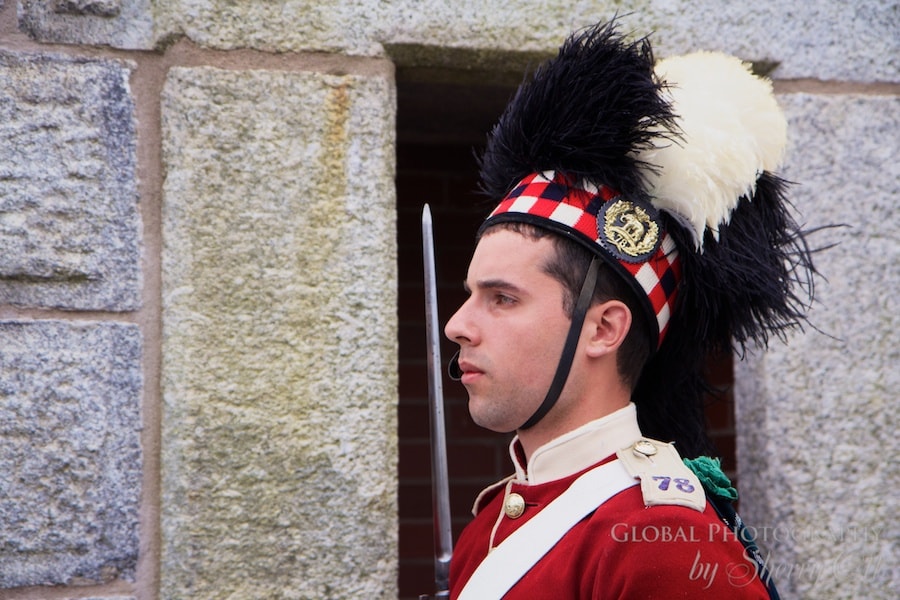
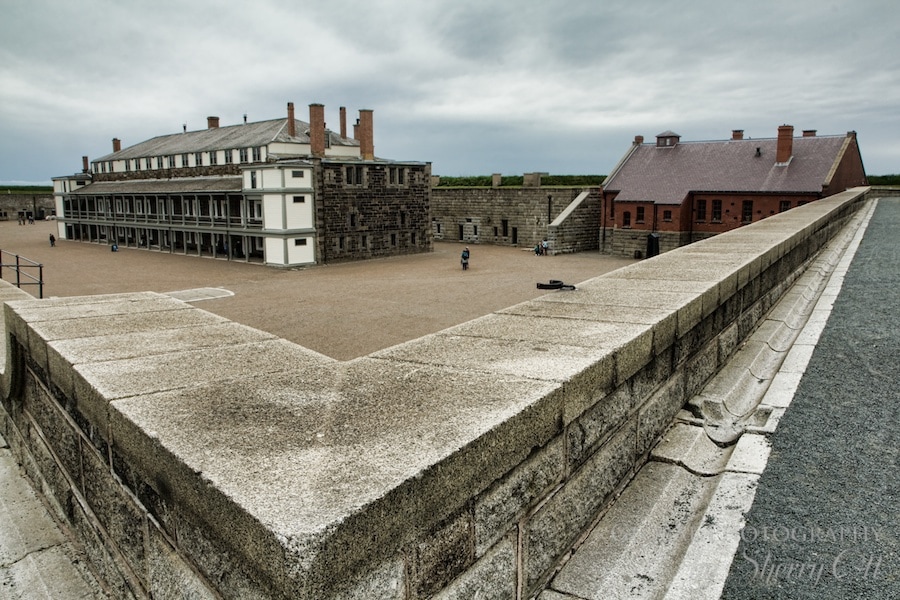





By Maria August 15, 2013 - 7:17 am
Sharp dressers – love those uniforms. Thanks for the peek inside the citadel and its living history.
By Sherry August 15, 2013 - 5:54 pm
Thanks Maria! It’s hard to resist men in uniforms!
By Mary @ Green Global Travel August 15, 2013 - 11:01 am
Fantastic article on the Citadel. I am impressed by long held traditions – but have to admit that I also love the modern twist and the fact that you included the tweet – “boom!”! Fantastic!
By Darlene Foster August 15, 2013 - 11:19 am
Love a man in a kilt! Great pictures of a wonderful historic site in Canada.
By Stephen August 15, 2013 - 1:49 pm
I spent three summers as a member of the 78th Highlanders in the late ’80s, an amazing experience. I bet I can still do some of my rifle drill…
By Nancy D. Brown August 15, 2013 - 7:02 pm
Great story and pictures. This post makes me want to visit the Citadel.
By Sherry August 16, 2013 - 1:35 am
If you go – just make sure you are there at noon to see/hear the gun!
By Andrew August 19, 2013 - 4:31 am
Great post, Sherry! Sorry I missed it when you first published it. Reading through I could continue to embellish the story about the history, why the 78th were there, how we train to do both infantry and artillery, etc. As far as summer jobs go, it was probably one of the best. It is also interesting to see how long people stay there… some of the people you photographed (mainly the officers) were there when I was there! One of them, Kevin Andrecyk, was just a raw recruit in my last year there, now he is head of the interpretation program. Good to see people stay with it and help it grow.
I loved the bit with the noon gun. Very funny. 🙂 In the winter the gun is fired with only two people and, although it’s pretty desolate, it can make for some interesting photographs.
To Stephen: I missed you by about 5 years or so then as I was mid-to-late 90s. There were probably guys still around from your days when I was there. I too still remember the drill and my wife tells me I march after I’ve had too much to drink. Oh well!
By Kevin October 3, 2017 - 2:33 pm
78th (Seaforth) Highlanders! AKA the Ross-shire Buffs! Terrific uniforms. Well done, lads!